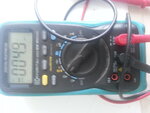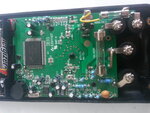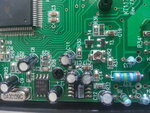jonnybgood
Full Member level 4

Hi,
I have this Kyoritsu DMM which I owned for 4 years now. This year I will be using it to take some accurate measurements for my school project.
I need to calibrated it with reference voltages if possible. Attached are some photos of the circuit with 2 trimmer pots. I need to knows which is what.
I appreciate if you can share some practical methods of calibrating such a DMM.
thanks
jonny
I have this Kyoritsu DMM which I owned for 4 years now. This year I will be using it to take some accurate measurements for my school project.
I need to calibrated it with reference voltages if possible. Attached are some photos of the circuit with 2 trimmer pots. I need to knows which is what.
I appreciate if you can share some practical methods of calibrating such a DMM.
thanks
jonny






